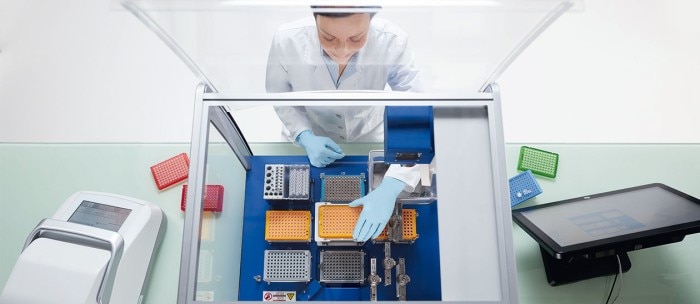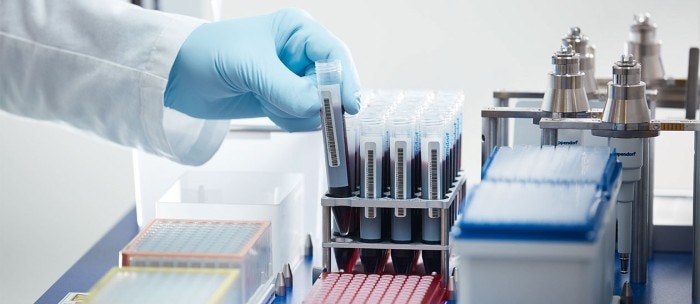MENU
IT | EUR
-
-
-
- Assistenza per bioprocessi
- Assistenza per centrifughe e rotori
- Assistenza per Mastercycler
- Assistenza per l'automazione
- Assistenza per ultracongelatori
- Assistenza per incubatori
- Assistenza per agitatori
- Assistenza per la fotometria
- Assistenza per regolazione termica e miscelazione
- Assistenza per pipette
-
-
-
-
- Assistenza per bioprocessi
- Assistenza per centrifughe e rotori
- Assistenza per Mastercycler
- Assistenza per l'automazione
- Assistenza per ultracongelatori
- Assistenza per incubatori
- Assistenza per agitatori
- Assistenza per la fotometria
- Assistenza per regolazione termica e miscelazione
- Assistenza per pipette
-
IT | EUR
-
- Centrifughe da banco
- Centrifughe da pavimento
- Centrifughe refrigerate
- Microcentrifughe
- Centrifughe multiuso
- Centrifughe ad alta velocità
- Ultracentrifughe
- Concentratore
- Prodotti IVD
- High-Speed and Ultracentrifuge Consumables
- Provette per centrifughe
- Piastre per centrifughe
- Gestione degli apparecchi
- Gestione di campioni e informazioni
Nessun risultato trovato
Cerca suggerimenti

Nucleic Acid Purification – How to tackle routines and gain time?
Dr. Stefanie Rösel Esplora la scienza biologica
- Sequenziamento di seconda generazione
- Automazione
- Saggio
- Salute e medicina
Aged more than one century, nucleic acid purification is anything but ordinary. Imagine routine DNA/RNA purification becomes simple and easy to perform without losing reproducibility, precision and quality? Read how to tackle it…
Nucleic Acid Purification (NAP), also termed Nucleic Acid Extraction (NAE), is a central part upstream of many analysis workflows ranging from PCR to NGS. The need for high-throughput assays and nucleic acid analyses in areas like microbiome and cancer research up to pharmacogenomics is constantly increasing, whether with genomic nucleic acids, RNA, mitochondrial DNA or plasmids.
Respective disruption methods are as various as the input material is. With one sample a technique works well, with the other not at all. That certainly looks familiar, doesn't it? Two major approaches for DNA/RNA purification evolved over time, used by most of the commercially available protocols: silica matrices and magnetic beads. The silica-based procedure with the typical spin columns is easy to perform, fast and delivers highly pure DNA/RNA. Magnetic beads are very elegant and efficient. Nucleic acids can be separated from complex mixtures without any centrifugation step.
Surely, nucleic acid purification is routine. Anyway, it is time consuming and can get challenging. Probably, every one of us has experienced that precise and safe liquid transfer with manual pipettes can become a hurdle for precision and reproducibility. An annoying example are dripping pipette tips right after the aspiration of “vicious”, volatile liquids like ethanol. Manual processing of magnetic beads holds the risk to carryover beads which then interfere with downstream applications. Processing of various input materials such as bacteria, tissue or plants challenge your lysis by demanding a maximum on flexibility. And with time pressure on the back of your neck, things can get even worse with 96-well plates. The worst thing at the end is to have no yield. But pessimism aside, here comes the good news.
Delegate your routine nucleic acid purification and enjoy peace of mind! An automated liquid handling robot allows you to:
Nucleic acid purification with silica spin columns and magnetic beads are perfectly suited for automation. Particularly magnetic beads are very convenient. The procedure is easy to execute, scalable and no change from the manual workflow is needed. For spin columns the robot performs all the work except for the centrifugation steps. If using filter plates the process can be fully automated, by replacing the centrifuge with a vacuum-based purification approach. Don’t worry about changing from single tubes to plates. It is definitely worth it!
Respective disruption methods are as various as the input material is. With one sample a technique works well, with the other not at all. That certainly looks familiar, doesn't it? Two major approaches for DNA/RNA purification evolved over time, used by most of the commercially available protocols: silica matrices and magnetic beads. The silica-based procedure with the typical spin columns is easy to perform, fast and delivers highly pure DNA/RNA. Magnetic beads are very elegant and efficient. Nucleic acids can be separated from complex mixtures without any centrifugation step.
Nothing to give away
Surely, nucleic acid purification is routine. Anyway, it is time consuming and can get challenging. Probably, every one of us has experienced that precise and safe liquid transfer with manual pipettes can become a hurdle for precision and reproducibility. An annoying example are dripping pipette tips right after the aspiration of “vicious”, volatile liquids like ethanol. Manual processing of magnetic beads holds the risk to carryover beads which then interfere with downstream applications. Processing of various input materials such as bacteria, tissue or plants challenge your lysis by demanding a maximum on flexibility. And with time pressure on the back of your neck, things can get even worse with 96-well plates. The worst thing at the end is to have no yield. But pessimism aside, here comes the good news.
Your partner to increase throughput and reproducibility
Delegate your routine nucleic acid purification and enjoy peace of mind! An automated liquid handling robot allows you to:
- automate and standardize routine pipetting work
- perform high-throughput applications in up to 96-well plates with high sample processivity
- process batches with a multitude of samples (e.g. blood, tissues)
- release time resources
- reduce manual pipetting errors
- maximize assay reproducibility
- automate documentation
Nucleic acid purification with silica spin columns and magnetic beads are perfectly suited for automation. Particularly magnetic beads are very convenient. The procedure is easy to execute, scalable and no change from the manual workflow is needed. For spin columns the robot performs all the work except for the centrifugation steps. If using filter plates the process can be fully automated, by replacing the centrifuge with a vacuum-based purification approach. Don’t worry about changing from single tubes to plates. It is definitely worth it!
Meno informazioni

The robot has many skills that will make your life easier:
Lab automation, standardization and documentation are the keys for reliable and reproducible results in nucleic acid purification. Don't spend your time with routine work if "something” else can do it!
- Precise dispensing of samples and reagents
- Simultaneous handling of large numbers of samples with precision and speed
- Automatic tracking of samples and results via integrated barcode reader
- Fully automated and validated protocols for silica-matrices or magnetic beads kits
- Bench-top, if desired.
Lab automation, standardization and documentation are the keys for reliable and reproducible results in nucleic acid purification. Don't spend your time with routine work if "something” else can do it!
Meno informazioni
